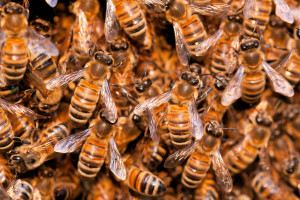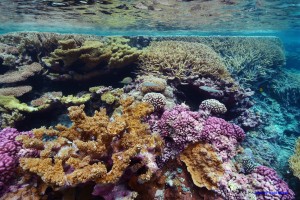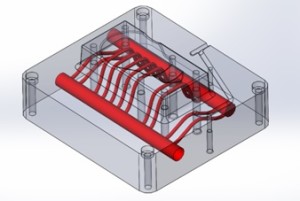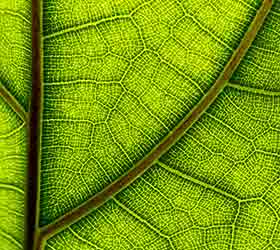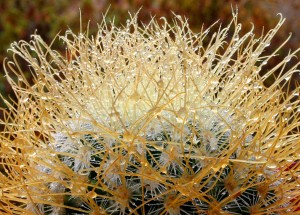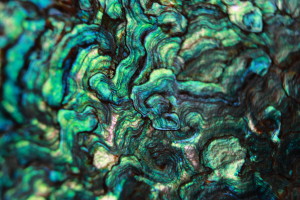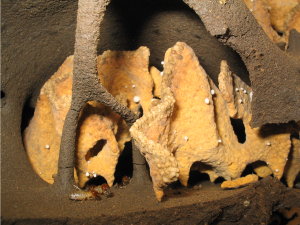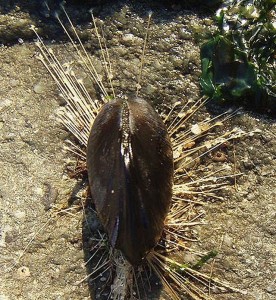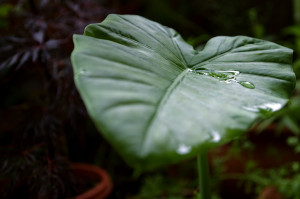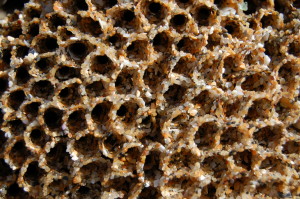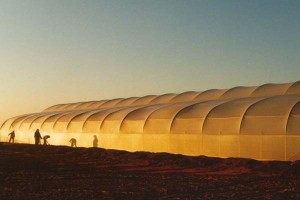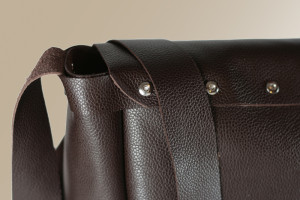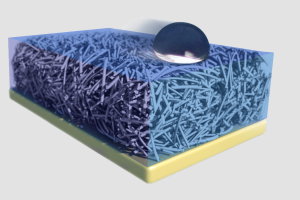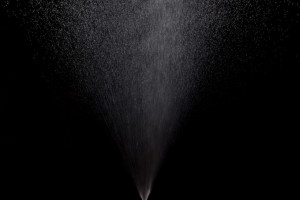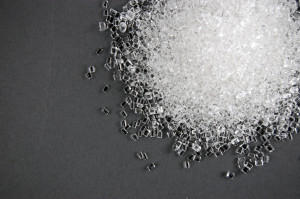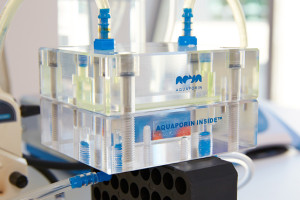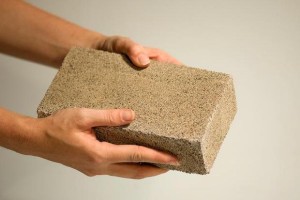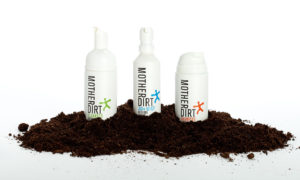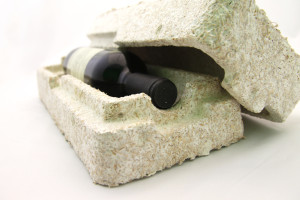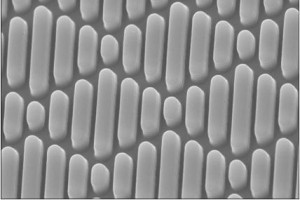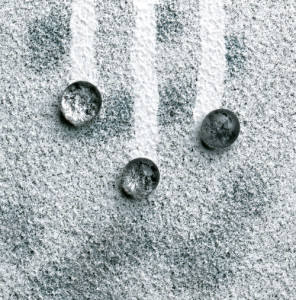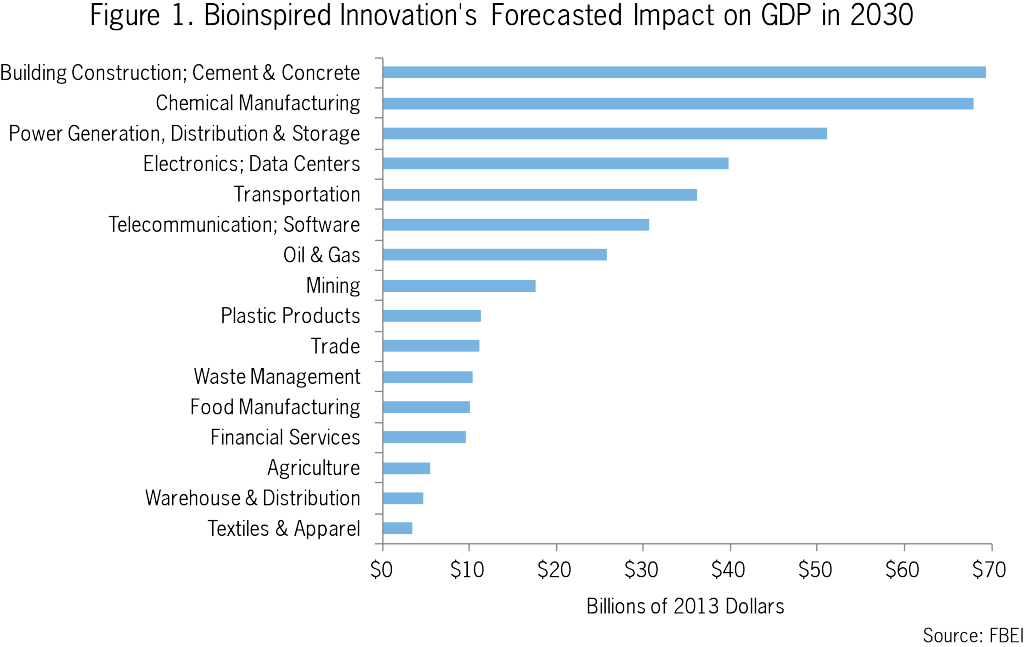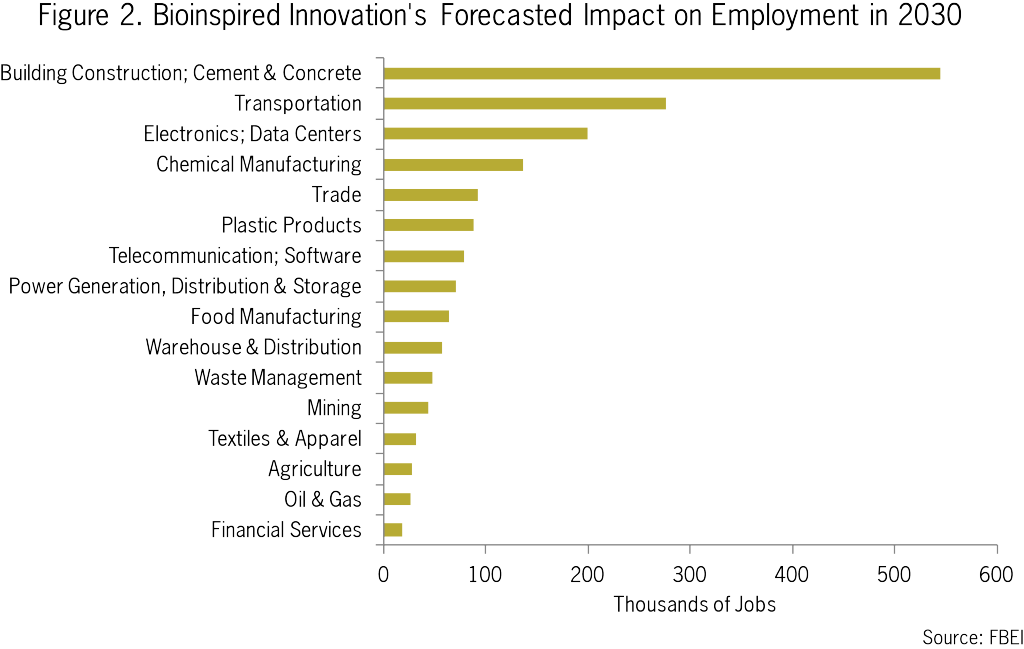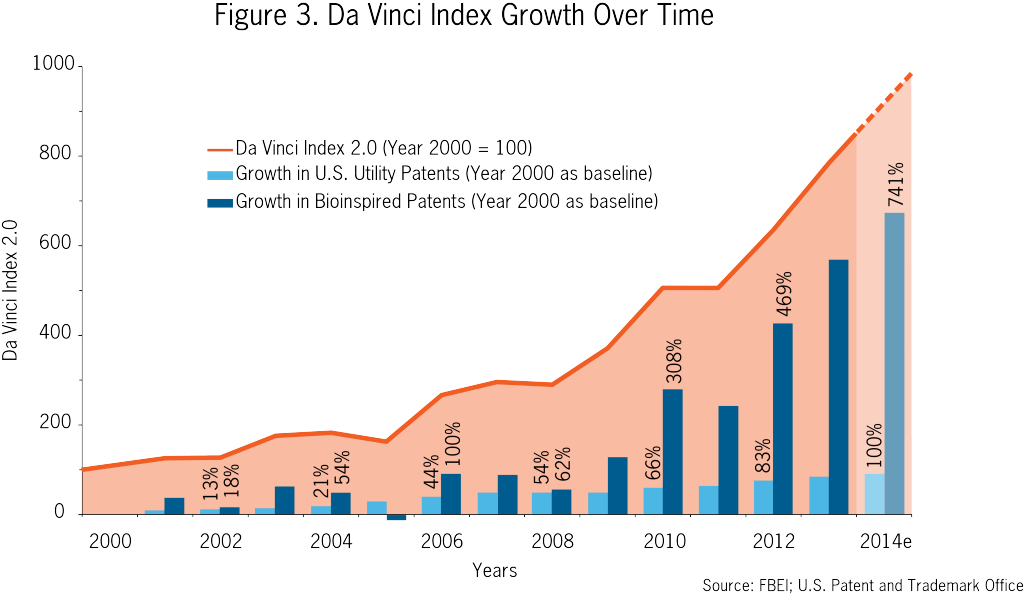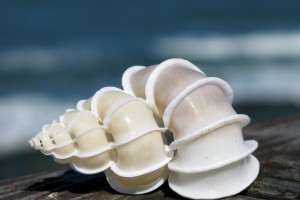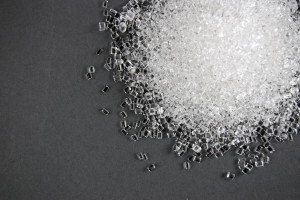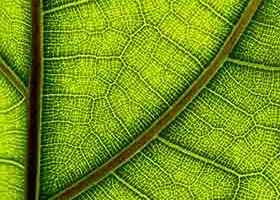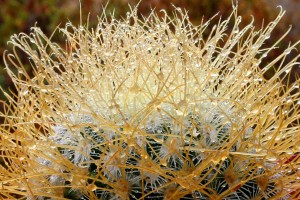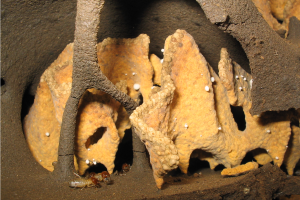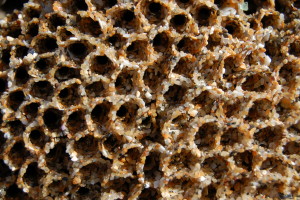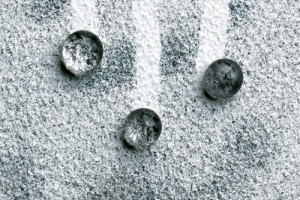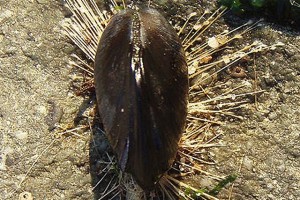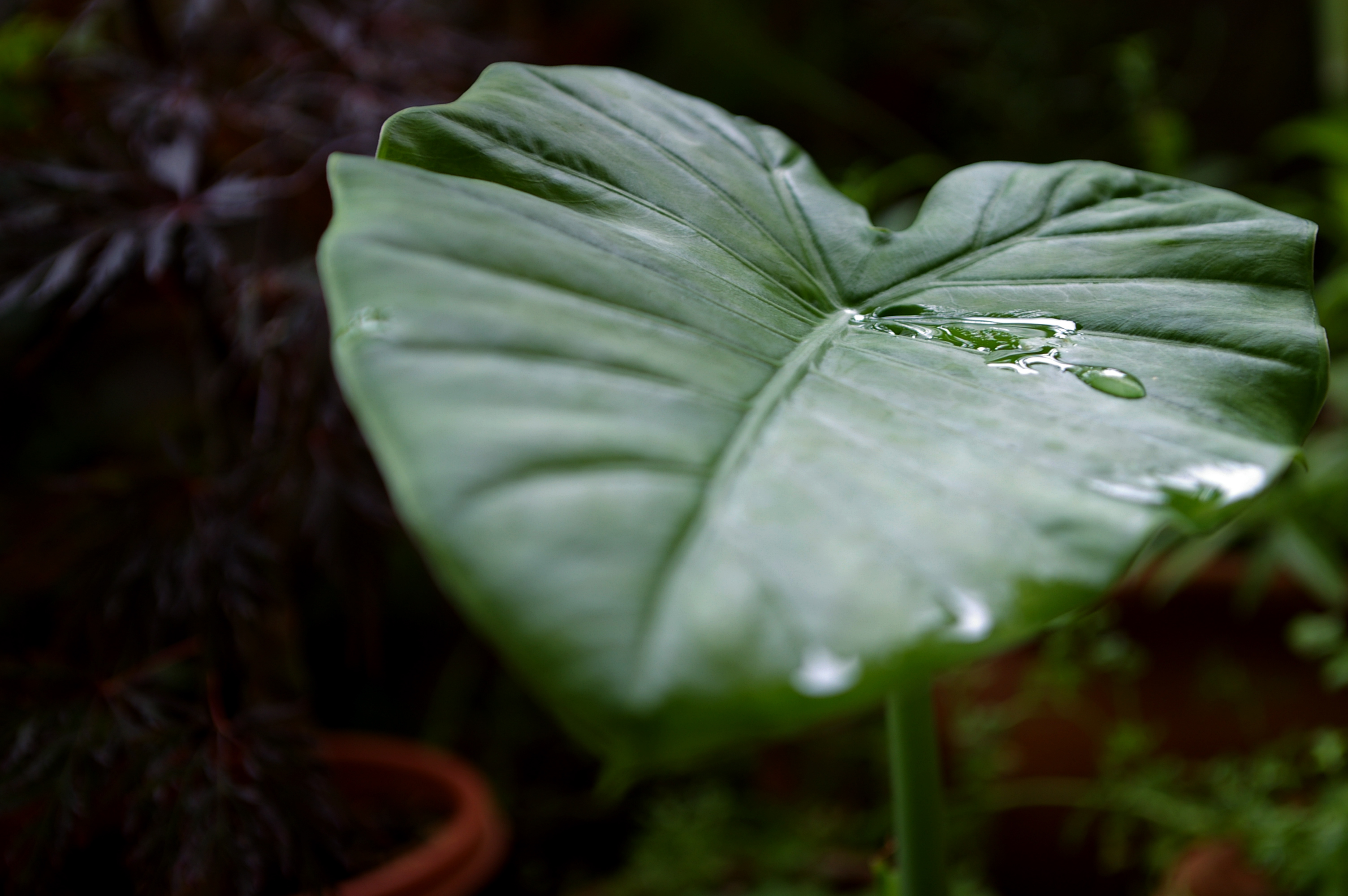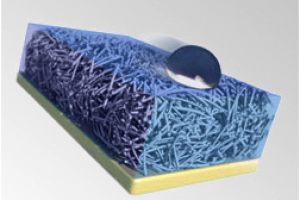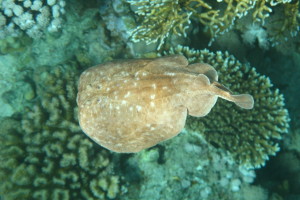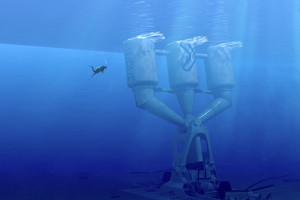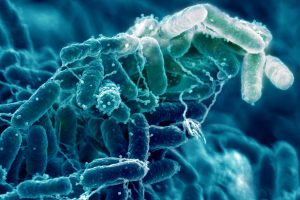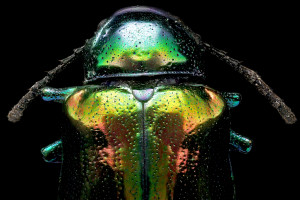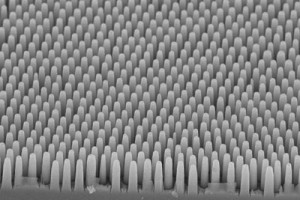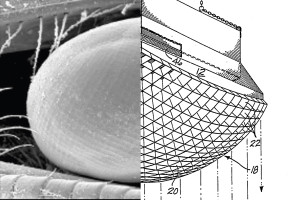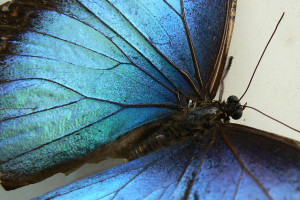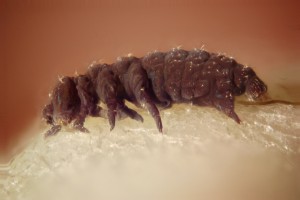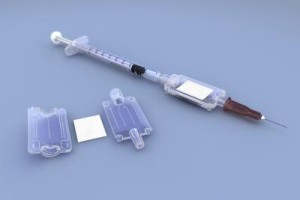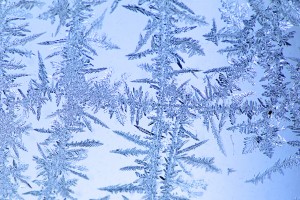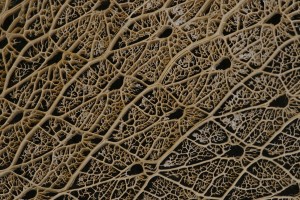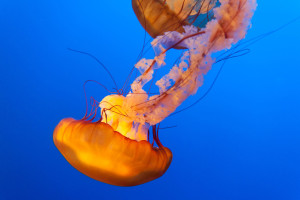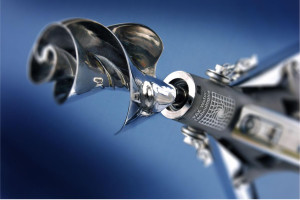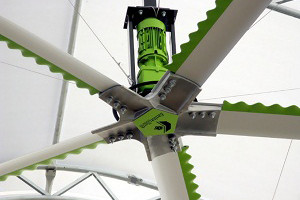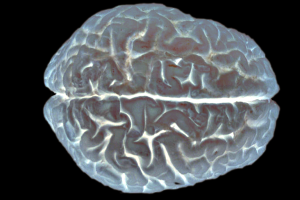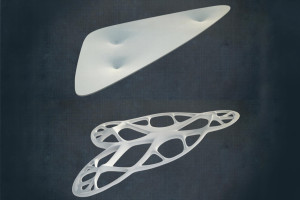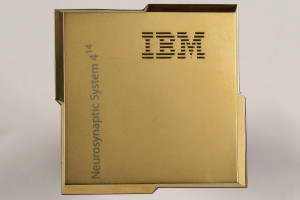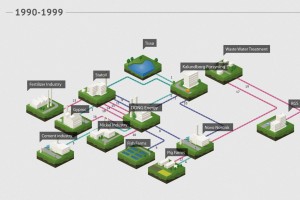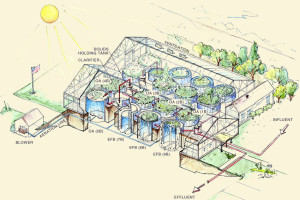Market Readiness Infographic References
P1. C. Freeman et al., “Structural control of crystal nuclei by an eggshell protein,” Angew. Chem. Int. Ed., vol. 49, Jun. 2010. doi: 10.1002/anie.201000679.
P2. Personal communication with Dr. Dinolfo, 2014.
P3. Personal communication with Dr. Wan, 2014.
P4. D. Wendell et al., “Artificial photosynthesis in ranaspumin-2 based foam,” Nano Lett., vol. 10, Mar. 2010. doi: 10.1021/nl100550k.
P5. “Biological materials,” Center for Biologically Inspired Design, http://www.cbid.gatech.edu/, Accessed Dec. 2014.
P6. Personal communication with Blue Planet, 2014.
P7. “Oil spill cleanup using bioremediation,” BioWorld Products, http://www.bioworldusa.com/, Accessed Jan. 2015.
P8. Novomer, http://www.novomer.com/, Accessed Oct. 2014.
P9. A. Abbott, “‘Bat-nav’ system enables three-dimensional manoeuvres,” Nature News, Dec. 2014, http://www.nature.com/, Accessed Dec. 2014.
P10. E. Ternaux et al., Industry of nature: Another approach to ecology, Frame Publishers, 2010.
P11. E. Ternaux et al., Industry of nature: Another approach to ecology, Frame Publishers, 2010.
P12. C. Noone, “Heliostat field optimization: A new computationally efficient model and biomimetic layout,” Sol. Ener., vol. 86, Feb. 2012. doi:10.1016/j.solener.2011.12.007.
P13. “Volvo cars turns to locust swarms for future safety solutions,” Volvo Car Group, Sept. 2008, https://www.media.volvocars.com/, Accessed Dec. 2014.
P14. C. Perry, “A self-organizing thousand-robot swarm,” Harvard School of Engineering and Applied Sciences, Aug. 2014, http://www.seas.harvard.edu/, Accessed Dec. 2014.
P15. S. Anthony, “Harvard cracks DNA storage, crams 700 terabytes of data into a single gram,” Extreme Tech, Aug. 2012, http://www.extremetech.com/, Accessed Jan. 2015.
P16. T. Hino and S. Chakrabartty, “Chapter 2. Noise exploitation and adaptation in neuromorphic sensors,” Engineered Biomimicry, A. Lakhtakia, and R. Martín-Palma, Elsevier, 2013.
P17. C.H.G. Wright and S. Barrett, “Chapter 1. Biomimetic vision sensors,” Engineered Biomimicry, A. Lakhtakia and R. Martín-Palma, Elsevier, 2013.
P18. B. Nelson, “Scientists abuzz over more efficient Web servers,” NBC News.com, Dec. 2007, http://www.nbcnews.com/, Accessed Jan. 2015.
P19. “New IBM SyNAPSE Chip Could Open Era of Vast Neural Networks,” IBM, Aug. 2014, http://www.ibm.com/, Accessed Feb. 2015.
P20. P. Miller, “The Genius of Swarms,” National Geographic, Jul. 2007, http://ngm.nationalgeographic.com/, Accessed Feb. 2015.
P21. E. Hart and J. Timmis, “Application areas of AIS: The past, the present and the future,” Appl. Soft Comput., vol. 8, Dec. 2006. doi:10.1016/j.asoc.2006.12.004.
P22. G. Hornby et al., “Evolutionary computation,” MIT Press J., vol. 19, Feb. 2011. doi:10.1162/EVCO_a_00005.
P23. P. Miller, “The Genius of Swarms,” National Geographic, Jul. 2007, http://ngm.nationalgeographic.com/, Accessed Feb. 2015.
P24. “Altair Optistruct: Optimization Driven Structural Analysis,” Altair Hyperworks, http://www.altairhyperworks.com/, Accessed Jan. 2015.
P25. “Solutions – Demand Management,” Encycle, http://www.regenenergy.com/, Accessed Feb. 2015.
P26. M. Silver and K. Vistakula, “Bio-electric space exploration,” IntAct Labs LLC, May 2007.
P27. Personal communication with Dr. Stipanovic, 2014.
P28. “Our developmental products,” Advanced Biomimetic Sensors, 2009, http://abs-isensors.com/, Accessed Nov. 2014.
P29. “bioSTREAM,” BioPower Systems, http://www.biopowersystems.com/, Accessed Dec. 2014.
P30. “Current technologies: µMist® Platform Technology,” Swedish Biomimetics 3000, 2013, http://www.swedishbiomimetics.com/, Accessed Feb. 2013.
P31. “bioWAVE,” BioPower Systems, http://www.biopowersystems.com/, Accessed Dec. 2014.
P32. Pilus Energy/YouTube, “Pilus Energy is going to save the world…,” YouTube, Jan. 2014, https://www.youtube.com/, Accessed Jan. 2015.
P33. S. Finger and M. Piccolino, The shocking history of electric fishes: From ancient epochs to the birth of modern neurophysiology, Oxford University Press, 2011.
P34. Personal communication with Dr. Letchford, 2014.
P35. “Flying snakes: Slithering through the air,” The Economist, Dec. 2010, http://www.economist.com/, Accessed Dec. 2014.
P36. “Efficient aviation: V for victory,” The Economist, Dec. 2009, http://www.economist.com/, Accessed Dec. 2014.
P37. L. Ruiz et al., “Vortex-enhanced propulsion,” J. Fluid Mech., vol. 668, Dec. 2010. doi:10.1017/S0022112010004908.
P38. “RoboClam,” MIT GEAR LAB, http://gear.mit.edu/, Accessed Dec. 2014.
P39. NU McCormick/YouTube, “Midwest mechanics seminar presents John Dabiri: Bio-inspired wind energy,” YouTube, Nov. 2013, https://www.youtube.com/, Accessed Oct. 2014.
P40. NBD Nano, http://www.nbdnano.com/index.html, Accessed Mar 2015.
P41. Envira-North Systems Ltd, http://www.enviranorth.com/, Accessed Feb. 2015.
P42. E. Ternaux et al., Industry of nature: Another approach to ecology, Frame Publishers, 2010.
P43. “PAX Mixer,” PAX Scientific, http://paxscientific.com/, Accessed Feb. 2015.
P44. E. Ternaux et al., Industry of nature: Another approach to ecology, Frame Publishers, 2010.
P45. C. Hayashi, “The magnificence of spider silk,” TED2010, Feb. 2010, http://www.ted.com/, Accessed Feb. 2015.
P46. E. Ternaux et al., Industry of nature: Another approach to ecology, Frame Publishers, 2010.
P47. Personal communication with Dr. Nomura, 2014.
P48. R. Tesfaye, “How seashells inspired ‘unbreakable’ glass,” The McGill Daily, Feb. 2015, http://www.mcgilldaily.com/, Accessed Feb. 2015.
P49. S. Nealon, “Mantis shrimp stronger than airplanes: Composite material inspired by shrimp stronger than standard used in airplane frames,” University of California/Science Daily, Apr. 2014, http://www.sciencedaily.com/, Accessed Nov. 2014.
P50. “Biofilm engineering,” The Joshi Lab, http://www.joshigroup.seas.harvard.edu/, Accessed Nov. 2014.
P51. Personal communication with Dr. Coates, 2014.
P52. Personal communication with Dr. Netravali, 2014.
P53. Personal communication with Dr. Gross, 2014.
P54. Personal communication with Dr. Guo, 2014.
P55. A. Menges, “Landesgartenschau exhibition hall,” Stuttgart University, 2014, http://www.achimmenges.net/, Accessed Dec. 2014.
P56. A. Forgacs, “Leather and meat without killing animals,” TEDGlobal 2013, Jun. 2013, http://www.ted.com/, Accessed Jan. 2015.
P57. N. Lang et al., “A blood-resistant surgical glue for minimally invasive repair of vessels and heart defects,” Sci. Transl. Med., vol. 6, Jan. 2014. DOI: 10.1126/scitranslmed.3006557.
P58. “bioMASON Grows Bricks,” bioMASON, http://biomason.com/, Accessed Jan. 2015.
P59. A. Forgacs, “Leather and meat without killing animals,” TEDGlobal 2013, Jun. 2013, http://www.ted.com/, Accessed Jan. 2015.
P60. “About SLIPS,” SLIPS Technologies, 2014, http://www.slipstechnologies.com/, Accessed Feb. 2015.
P61. Personal communication with Ceralink, 2014.
P62. “Mushroom Materials,” Ecovative Design, http://www.ecovativedesign.com/, Accessed Feb. 2015.
P63. “About non-covalent derivatization,” Warner Babcock Institute, http://www.warnerbabcock.com/, Accessed Oct. 2014.
P64. Terrapin Bright Green. “Non-toxic anti-fouling solutions: Sharklet,” New York Biomimicry Innovators Group, http://www.ny-big.org/, Accessed Oct. 2014.
P65. “wikipearl™,” WikiFoods, Inc., 2014, http://www.wikipearl.com/, Accessed Dec. 2014.
P66. “Innovations,” Interface, http://www.interface.com/, Accessed Jan. 2015.
P67. “StoCoat Lotusan,” Sto Corp., http://www.stocorp.com/, Accessed Jan. 2015.
P68. Terrapin Bright Green, “Healthy and cost-effective indoor environments: Purebond,” New York Biomimicry Innovators Group, http://www.ny-big.org/, Accessed Jan. 2015.
P69. “About us,” Velcro, http://www.velcro.com/, Accessed Jan. 2015.
P70. J. Aizenberg et al., “ Biological glass fibers: Correlation between optical and structural properties,” PNAS, vol. 101, Mar. 2004. doi: 10.1073/pnas.030784310.
P71. B. Han et al., “Bio-inspired networks for optoelectronic applications,” Nat. Comms., vol. 5, Nov. 2014. doi:10.1038/ncomms6674.
P72. “Bugs inspire better X-rays: Nanostructures modeled like moth eyes may boost medical imaging,” Optical Society of America/Science Daily, Jul. 2012, http://www.sciencedaily.com/, Accessed Nov. 2014.
P73. J. Kim et al., “Biologically inspired humidity sensor based on three-dimensional photonic crystals,” Appl Phys Lett, vol. 97, Sep. 2010. doi: 10.1063/1.3486115.
P74. C. Yu et al., “Adaptive optoelectronic camouflage systems with designs inspired by cephalopod skins,” PNAS, vol. 111, Sept. 2014. doi: 10.1073/pnas.1410494111.
P75. M. Kolle et al., “Bio‐inspired band‐gap tunable elastic optical multilayer fibers,” Adv Matr, vol. 25, Jan. 2013. doi: 10.1002/adma.201203529.
P76. A. Pris et al., “Towards high-speed imaging of infrared photons with bio-inspired nanoarchitectures,” Nat Photonics, vol. 6, Feb. 2012. doi:10.1038/nphoton.2011.355
P77. “ChromaFlair Pigment,” JDSU, http://www.jdsu.com/, Accessed Nov. 2014.
P78. “Advantages of dye solar cell technology,” Dyesol, http://www.dyesol.com/, Accessed Dec. 2014.
P79. “HotZone portable electric infrared heater,” Schaefer Ventilation, http://www.schaeferfan.com/, Accessed Dec. 2014.
P80. Takemura et al., “Absence of eye shine and tapetum in the heterogeneous eye of Anthocharis butterflies (Pieridae),” J. Exp Biol. doi: 10.1242/jeb.002725
Yamada et al., “Characterization of antireflection moth-eye film on crystalline silicon photovoltaic module,” Opt Express. doi: 10.1364/OE.19.00A118
Sun et al., “Broadband moth-eye antireflection coatings on silicon,” Appl Phys Lett. doi: 10.1063/1.2870080
P81. H. Ley, “Experimentelle Tests zur Wahrnehmbarkeit von UV-reflektierenden ‘Vogelschutzgläsern’ durch mitteleuropäische Singvögel,” Berichte zum Vogelschutz, vol. 46, 2006.
P82. M. Pawlyn, Biomimicry in architecture, RIBA Publishing, 2011.
P83. M. Pawlyn, Biomimicry in architecture, RIBA Publishing, 2011.
P84. Honeybee capital, http://www.honeybeecapital.com/, Accessed Jan. 2015.
P85. Terrapin Bright Green.
P86. E. Ternaux et al., Industry of nature: Another approach to ecology, Frame Publishers, 2010.
P87. “About Eco-Machines,” John Todd Ecological Design, http://toddecological.com/, Accessed Feb. 2015.
P88. “Kalundborg symbiosis,” Kalundborg Symbiosis Institute, http://www.symbiosis.dk/en, Accessed Aug. 2012.
P89. C. Winter, “The Bacteria Solution,” Bloomberg Businessweek, Jul. 2015.
P90. E. Ternaux et al., Industry of nature: Another approach to ecology, Frame Publishers, 2010.
P91. “Lifelike cooling for sunbaked windows,” Wyss Institute, Jul. 2013, http://wyss.harvard.edu/, Accessed Jan. 2015.
P92. Personal communication with HARBEC, Inc., 2014.
P93. “HydRIS (Hypodermic Rehydration Injection System),” Nova Laboratories Ltd, http://www.novalabs.co.uk/, Accessed Dec. 2014.
P94. V. Stern, “Dry out, put away,” The Scientist, Feb. 2010, http://www.the-scientist.com/, Accessed Nov. 2014.
P95. “Cool ice cream innovations,” Unilever, http://www.unileverusa.com/, Accessed Jan. 2015.
P96. J. Ju et al., “A multi-structural and multi-functional integrated fog collection system in cactus,” Nat. Comms., vol. 3, Dec. 2012. doi: 10.1038/ncomms2253.
P97. Personal communication with Dr. Soar and Dr. Turner, 2014.
P98. D. Chandler, “How to get fresh water out of thin air,” MIT News, Aug. 2013, http://newsoffice.mit.edu/, Accessed Dec. 2014.
P99. T. McKeag. “Case Study Sahara Forest Project: Seeing the Forest for the Trees.” Zygote Quarterly, vol. 4, 2014, Accessed Nov. 2014.
P100. “Biomimetic membranes – New separation technology tools with ancient roots,” Aquaporin, http://www.aquaporin.dk/, Accessed Oct. 2014.
P101. “Biolytix … Award winning wastewater treatment systems,” Biolytix, http://www.biolytix.com/, Accessed Nov. 2014.
P102. “Hairprint – Restores your hair to its natural color,” Hairprint, http://www.myhairprint.com/, Accessed May 2016.
P103. “Bolt Threads – Technology,” Bolt Threads, https://boltthreads.com/, Accessed May 2016.
P104. “Lizard’s funnelling skin copied in the lab,” BBC News, http://www.bbc.com/news/, Accessed May 2016.
P105. “Mango Materials – Our Mission,” Mango Materials, http://mangomaterials.com/, Accessed May 2016.
P106. “FE2owlet,” Ziehl-Abegg, http://www.ziehl-abegg.com/us/en/, Accessed May 2016.
P107. “The first and only textile finish inspired by nature,” GreenShield, http://greenshieldfinish.com/, Accessed May 2016.
P108. “BioKnit: A New Type of Shoe,” Circulate News, http://circulatenews.org/, Accessed May 2016.
P109. “Super-strong material inspired by squid teeth is self-healing,” Popular Science, http://www.popsci.com/, Accessed May 2016.
P110. http://ginkgobioworks.com, Accessed August 2016.
P111. “Preserving mother earth: ford first automaker to use captured co2 to develop foam and plastic for vehicles,” Ford Motor Company Media Center, https://media.ford.com/, Accessed August 2016.
Section References
- Calvert et al. Synthetic aesthetics: investigating synthetic biology’s designs on nature. MIT Press, 2014.
- Benyus, Biomimicry: Innovation inspired by nature, HarperCollins Publishers, 1997.
- G. Nisbet and N. H. Sleep, “The habitat and nature of early life,” Nature, vol. 409, Feb. 2001. doi:10.1038/35059210
- Wallace-Wells, “The Blip,” New York Magazine, Jul. 2013, http://nymag.com/, Accessed Sept. 2014.
- Kenny, “3 Ways to Innovate in a Stagnant Environment,” The Business, Mar. 2014, Harvard Business School, http://www.hbs.edu/, Accessed Sept. 2014.
- Gibney, “What happened to the future?” Founders Fund, 2011, http://www.foundersfund.com/, Accessed Sept. 2014.
- “PRI Fact Sheet,” Principles for Responsible Investment, http://www.unpri.org/news/, Accessed Mar. 2015.
- Baker, “PRI exec harnessing the power of $45 trillion,” Pensions & Investments, Oct. 2014, http://www.unpri.org/, Accessed Mar. 2015.
- “Greenhouse Gas Emissions,” EPA, Apr. 2014, http://www.epa.gov/, Accessed Oct. 2014.
- “Clean Energy Fund Proposal,” NYSERDA, 2014.
- “Emissions,” Global carbon atlas, 2014, http://www.globalcarbonatlas.org/, Accessed Oct. 2014.
- “50 Disruptive Companies: Novomer,” MIT Technology Review, 2012, http://www.technologyreview.com/, Accessed Oct. 2014.
- “Chapter 11.6 Portland cement manufacturing,” Emission factors/AP 42, vol. 1, EPA, Jan. 1995.
- “2013 Activity Report,” The European Cement Association, 2013.
- Personal communication with Blue Planet, 2014.
- Benhelal et al., “Global strategies and potentials to curb CO2 emissions in cement industry,” J. Clean Prod, vol. 51, Jul. 2013. doi:10.1016/j.jclepro.2012.10.049
- Novomer, http://www.novomer.com/, Accessed Oct. 2014.
- J. Clouse, “How to Reduce Global Warming for Fun + Profit,” Ozy, Oct. 2014, http://www.ozy.com/, Accessed Oct. 2014.
- “Polymer produced from CO2 waste gas makes commercial debut,” Chemical Engineering, Jan. 2015, http://www.chemengonline.com/, Accessed Feb. 2015.
- Wan, “Research Interests,” WAN Microfluidic Laboratory, https://www.rit.edu, Accessed Feb. 2015.
- “Facts and figures,” UN Water, 2013, http://www.unwater.org/, Accessed Dec. 2014.
- Turner, “Fungi and water homeostasis,” Termite research, http://www.esf.edu/, Accessed Oct. 2014.
- Ju et al., “A multi-structural and multi-functional integrated fog collection system in cactus.” Nat Comms, vol. 3, Dec. 2012. doi: 10.1038/ncomms2253.
- Nørgaard, and M. Dacke, “Fog-basking behaviour and water collection efficiency in Namib Desert Darkling beetles,” Front Zool, vol. 7, Jul. 2010. doi:10.1186/1742-9994-7-23
- Glime, “Ch. 7: Water relations: Physiological adaptations,” Bryophyte Ecol, vol. 1, 2007, Accessed on Jan. 2015.
- Chandler, “How to get fresh water out of thin air,” MIT News, Aug. 2013, http://newsoffice.mit.edu/, Accessed Dec. 2014.
- “Biomimetic membranes – New separation technology tools with ancient roots,” Aquaporin, http://www.aquaporin.dk/, Accessed Oct. 2014.
- “Invitation to join the water revolution,” Aquaporin, http://www.aquaporin.dk/, Accessed Oct. 2014.
- “News Archive,” Aquaporin Asia, Oct. 2014, http://www.aquaporin.asia/, Accessed Oct. 2014.
- McKeag. “Case Study Sahara Forest Project: Seeing the Forest for the Trees.” Zygote Quart, vol. 4, 2014, Accessed Nov. 2014.
- “Technology: Economics,” Seawater Greenhouse, 2010, http://www.seawatergreenhouse.com/, Accessed Nov. 2014.
- “Ventilation for Acceptable Indoor Air Quality,” ANSI/ASHRAE Standard 62.1-2013, ASHRAE, 2013.
- A. Meyer, and P. Chen, Biological materials science, Cambridge University Press, 2014.
- McKeag, “Case study: Return of the swamp thing,” Zygote quarterly, vol. 3, 2012, Accessed Nov. 2014.
- Bohn, and W. Federle, “Insect aquaplaning: Nepenthes pitcher plants capture prey with the peristome, a fully wettable water-lubricated anisotropic surface,” P. Natl Acad Sci USA, vol. 101, Aug. 2004. doi: 10.1073/pnas.0405885101
- Koch et al., “The superhydrophilic and superoleophilic leaf surface of Ruellia devosiana (Acanthaceae): a biological model for spreading of water and oil on surfaces,” Funct Plant Biol, vol. 36, Apr. 2009. http://dx.doi.org/10.1071/FP08295.
- “About SLIPS,” SLIPS Technologies, 2014, http://www.slipstechnologies.com/, Accessed Feb. 2015.
- Terrapin Bright Green. “Non-toxic anti-fouling solutions: Sharklet,” New York Biomimicry Innovators Group, http://www.ny-big.org/, Accessed Oct. 2014.
- Ensikat et al., “Superhydrophobicity in perfection: the outstanding properties of the lotus leaf,” Beilstein J. Nanotechnol., vol. 2, Mar. 2011. doi:10.3762/bjnano.2.19.
- “StoCoat Lotusan,” Sto Corp., http://www.stocorp.com/, Accessed Jan. 2015.
- “Mushroom Materials,” Ecovative Design, http://www.ecovativedesign.com/, Accessed Feb. 2015.
- Grand View Research, “Grand View Research, Inc: Global adhesives and sealants market expected to reach USD 43,195.5 million by 2020,” Mar. 2014, http://www.grandviewresearch.com/, Accessed Jan. 2015.
- Terrapin Bright Green. “Healthy and cost-effective indoor environments: Purebond,” New York Biomimicry Innovators Group, http://www.ny-big.org/, Accessed Jan. 2015.
- Carbon War Room, “News bulletin: Brick making report – Reducing industry’s emissions through economic opportunity,” Carbon War Room, Jan. 2013, http://carbonwarroom.com/, Accessed Jan. 2015.
- Lokier and G. K. Dosier, “A quantitative analysis of microbially-induced calcite precipitation employing artificial and naturally-occurring sediments,” EGU General Assembly 2013, vol. 15, 2013.
- “bioMASON Grows Bricks,” bioMASON, http://biomason.com/, Accessed Jan. 2015.
- “How to grow bricks from trillions of bacteria,” WIRED Magazine, Nov. 2015, http://www.wired.co.uk/, Accessed August 2016.
- Mickhalaf et al., “Overcoming the brittleness of glass through bio-inspiration and micro-architecture,” Nat Comms, vol. 5, Jan. 2014. doi:10.1038/ncomms4166.
- “Glass that bends but doesn’t break,” McGill University, Jan. 2014, http://www.mcgill.ca/, Accessed Feb. 2015.
- Tesfaye, “How seashells inspired ‘unbreakable’ glass,” The McGill Daily, Feb. 2015, http://www.mcgilldaily.com/, Accessed Feb. 2015.
- United Nations Food and Agriculture Organization, Livestock’s Long Shadow, 2006.
- Forgacs, “Leather and meat without killing animals,” TEDGlobal 2013, Jun. 2013, http://www.ted.com/, Accessed Jan. 2015.
- “Opportunity,” Modern Meadow, http://modernmeadow.com/, Accessed Feb. 2015.
- Wilson et al., “Inhibition of ice nucleation by slippery liquid-infused porous surfaces (SLIPS),” Phys Chem Chem Phys, vol. 15, Nov. 2012. doi: 10.1039/C2CP43586A
- Wong et al., “Bioinspired self-repairing slippery surfaces with pressure-stable omniphobicity,” Nature, vol. 477, Sept. 2011. doi:10.1038/nature10447
- Iversen and A. Rommelhoff, “The starch statolith hypothesis and the interaction of amyloplasts and endoplasmic reticulum in root geotropism,” J. Exp. Bot., vol. 29, Dec. 1978. doi: 10.1093/jxb/29.6.1319.
- Martin et al., “Hydrothermal vents and the origin of life,” Nat Rev Microbiol, Sept. 2008. doi:10.1038/nrmicro1991
- G. Holt, Ed. Bergey’s Manual of Determinative Bacteriology, Lippincott Williams & Wilkins, 1994.
- Finger and M. Piccolino, The shocking history of electric fishes: From ancient epochs to the birth of modern neurophysiology, Oxford University Press, 2011.
- “Energy,” World Ocean Review, 2010, http://worldoceanreview.com/, Accessed Feb. 2015.
- “Ocean Energy,” European Renewable Energy Association.
- Object: Austrailian Design Centre/YouTube, “Tim Finnigan on bioinspiration,” YouTube, Nov. 2012, https://www.youtube.com/, Accessed Dec. 2014.
- “bioWAVE,” BioPower Systems, http://www.biopowersystems.com/, Accessed Dec. 2014.
- “µMist spray technology,” University of Leeds, 2011, http://www.leeds.ac.uk/, Accessed Jan. 2015.
- “Current technologies: µMist® Platform Technology,” Swedish Biomimetics 3000, 2013, http://www.swedishbiomimetics.com/, Accessed Feb. 2013.
- Beheshti et al., “µMist®-The next generation fuel injection system: Improved atomisation and combustion for port-fuel-injected engines,” SAE Intl, Aug. 2011. doi: 10.4271/2011-01-1890
- “Cosworth and Swedish Biomimetics 3000® announce technical partnership to advance fuel injection systems inspired by the bombardier beetle’s defence mechanism,” Cosworth, Jun. 2013, http://www.cosworth.com/, Accessed Jan. 2014.
- “Beetle inspires development,” Medicon Village, Sept. 2012, http://www.mediconvillage.se/, Accessed Jan. 2015.
- “Fact sheet: Energy production and efficiency research – The roadmap to net-zero energy” Water Environment Research Foundation, Aug. 2011.
- Pilus Energy/YouTube, “Pilus Energy is going to save the world…,” YouTube, Jan. 2014, https://www.youtube.com/, Accessed Jan. 2015.
- “Tauriga Sciences Inc. subsidiary Pilus Energy LLC receives approval from the US EPA to commence scaled up pilot test,” Nasdaq: Globe Newswire, Sept. 2014, http://globenewswire.com/, Accessed Dec. 2014.
- Phillips and P. Jiang, “Chapter 12. Biomimetic antireflection surfaces,” Engineered Biomimicry, A. Lakhtakia and R. Martín-Palma, Elsevier, 2013.
- Kuo-Huang et al., “Correlations between calcium oxalate crystals and photosynthetic activities in palisade cells of shade-adapted Peperomia glabella,” Botanical studies, vol. 48, April 2007.
- Chiadini et al., “Simulation and analysis of prismatic bioinspired compound lenses for solar cells: II. Multifrequency analysis,” BioinspirBiomim, vol. 6, Mar. 2011. doi: 10.1088/1748-3182/6/1/014002.
- Kolle, Mathias et al., “Bio‐inspired band‐gap tunable elastic optical multilayer fibers,” Adv Mater, 25, Jan. 2013. doi: 10.1002/adma.201203529.
- Johnson, “Lens-like radiant energy transmission control means,” U.S. Patent: 4896656 A, Jan. 1990.
- H.G. Wright and S. Barrett, “Chapter 1. Biomimetic vision sensors,” Engineered Biomimicry, A. Lakhtakia and R. Martín-Palma, Elsevier, 2013.
- S. Risbud and M.H. Bartl, “Chapter 14. Solution-based Techniques for Biomimetics and Bioreplication,” Engineered Biomimicry, A. Lakhtakia, and R. Martín-Palma, Elsevier, 2013.
- Yamada et al., “Characterization of antireflection moth-eye film on crystalline silicon photovoltaic module,” Opt Express, vol. 19, Jan. 2011. http://dx.doi.org/10.1364/OE.19.00A118.
- J. Nam et al., “Incorporation of a light and carrier collection management nano-element array into superstrate a-Si:H solar cells,” Appl. Phys. Lett., vol. 99, Aug. 2011. doi: 10.1063/1.3628460.
- Forberich et al., “Performance improvement of organic solar cells with moth eye anti-reflection coating,” Thin Solid Films, vol. 516, Aug. 2008. doi:10.1016/j.tsf.2007.12.088.
- A. Chutanin et al., “High-efficiency photonic crystal solar cell architecture,” Opt Express, vol. 17, May 2009. http://dx.doi.org/10.1364/OE.17.008871.
- Ritter, “How lobster eyes inspired a radiant heater,” Make, Nov. 2014, http://makezine.com/, Accessed Jan. 2015.
- “HotZone portable electric infrared heater,” Schaefer, http://www.schaeferventilation.com/, Accessed Jan. 2015.
- Pris et al., “Towards high-speed imaging of infrared photons with bio-inspired nanoarchitectures,” Nat Photonics, vol. 6, Feb. 2012. doi:10.1038/nphoton.2011.355.
- Mazzoleni, Architecture Follows Nature, CRC Press, 2013.
- D’Amico et al., “Psychrophilic microorganisms: challenges for life,” EMBO Rep., vol. 7, April 2006, doi: 10.1038/sj.embor.7400662.
- Bennett et al., “Comparative overwintering physiology of Alaska and Indiana populations of the beetle Cucujus clavipes (Fabricius): roles of antifreeze proteins, polyols, dehydration and diapause,” J Exp Bio, vol. 208, Dec. 2005. doi: 10.1242/jeb.01892.
- L. Davies and C.L. Hew, “Biochemistry of fish antifreeze proteins.” FASEB J, vol. 4, May 1990.
- Moskin, “Creamy, healthier ice cream? What’s the catch?,” The New York Times, Jul. 2006, http://www.nytimes.com/, Accessed Dec. 2014.
- “Polymerase chain reaction (PCR),” National Center for Biotechnology Information, http://www.ncbi.nlm.nih.gov/, Accessed Nov. 2014.
- Vieille and G.J. Zeikus, “Hyperthermophilic enzymes: Sources, uses, and molecular mechanisms for thermostability,” Microbiol Mol Biol Rev., vol. 65, Mar. 2001. doi: 10.1128/MMBR.65.1.1-43.2001.
- Jaco Klok, “Anhydrobiosis,” Outside JEB, 2010.
- Stern, “Dry out, put away,” The Scientist, Feb. 2010, http://www.the-scientist.com/, Accessed Nov. 2014.
- Weaver et al., “Vaccine Storage and Handling,” Epidemiology and Prevention of Vaccine-Preventable Diseases, W. Atkinson et al., Public Health Foundation, 2012.
- “HydRIS (Hypodermic Rehydration Injection System),” Nova Laboratories Ltd, http://www.novalabs.co.uk/, Accessed Dec. 2014.
- “Global – Ice Cream,” MarketLine, Oct. 2014, http://store.marketline.com/, Accessed Jan. 2015
- Gill, “Sub-zero proteins transform dessert,” BBC NEWS, 15 Aug. 2009, http://www.bbc.com/, Accessed Jan. 2015.
- “Cool ice cream innovations,” Unilever, http://www.unileverusa.com/, Accessed Jan. 2015.
- Harman, The Shark’s Paintbrush: Biomimicry and How Nature is Inspiring Innovation, White Cloud Press: 2013.
- Bejan and J. Zane, Design in Nature: How the Constructal Law Governs Evolution in Biology, Physics, Technology, and Social Organization, Doubleday, 2012.
- Ruiz et al., “Vortex-enhanced propulsion,” J Fluid Mech, vol. 668, Dec. 2010. doi:10.1017/S0022112010004908
- “The PAX Water Mixer Advantage,” PAX Water Technologies, 2011, http://www.paxwater.com/, Accessed Dec. 2014.
- “PAX Mixer,” PAX Scientific, http://paxscientific.com/, Accessed Feb. 2015.
- Canter, “Humpback whales inspire new wind turbine technology,” Tribology and Lubrication Technology, Dec. 2008, http://www.stle.org/, Accessed Dec. 2014.
- Envira-North Systems Ltd, http://www.enviranorth.com/, Accessed Feb. 2015.
- Dabiri, “Potential order-of-magnitude enhancement of wind farm power density via counter-rotating vertical-axis wind turbine arrays,” J Renewable and Sustain Energy, vol. 3,Jul. 2011. doi: 10.1063/1.3608170
- Riley, “Fish School Us on Wind Power,” Nautilus, Jul. 2014, http://nautil.us/, Accessed Dec. 2014.
- Floreano and C. Mattiussi, Bio-inspired Artificial Intelligence: Theories, Methods and Technologies, MIT Press, 2008.
- Miller, “The Genius of Swarms,” National Geographic, Jul. 2007, http://ngm.nationalgeographic.com/, Accessed Feb. 2015.
- Fischetti, “Computers versus Brains,” Scientific American, Oct. 2011.
- Anthony, “Harvard cracks DNA storage, crams 700 terabytes of data into a single gram,” ExtremeTech, Aug. 2012, http://www.extremetech.com/, Accessed Feb. 2015.
- Banzhaf, “Chapter 17: Evolutionary Computation and Genetic Programming,” Engineered Biomimicry, A. Lakhtakia and R. Martín-Palma, Elsevier 2013.
- “November 2014,” TOP500: The list, http://top500.org/, Accessed Mar. 2015.
- “Solutions – Demand Management,” Encycle, http://www.regenenergy.com/, Accessed Feb. 2015.
- “Innovative Paths To Energy Efficiency: REGEN Energy,” New York Biomimicry Innovators Group, http://www.ny-big.org/, Accessed Feb. 2015.
- “Solutions – Markets Served,” Encycle, http://www.regenenergy.com/, Accessed Feb. 2015.
- Patton, “Engineers Bring Processes of Nature to Design,” The New York Times, Jan. 2013, http://www.nytimes.com/, Accessed Jan. 2015.
- “Altair Optistruct: Optimization Driven Structural Analysis,” Altair Hyperworks, http://www.altairhyperworks.com/, Accessed Jan. 2015.
- Schuhmacher, “Optimizing Aircraft Structures,” Concept to Reality, Winter 2006..
- “New IBM SyNAPSE Chip Could Open Era of Vast Neural Networks,” IBM, Aug. 2014, http://www.ibm.com/, Accessed Feb. 2015.
- “Brain Power,” IBM, http://research.ibm.com/, Accessed Feb. 2015.
- Johnny Madsen/YouTube, “Kalundborg Symbiosis,” YouTube, Sep. 2011, https://www.youtube.com, Accessed Feb. 2015.
- “Kalundborg Symbiosis,” Kalundborg Symbiosis Institute, http://www.symbiosis.dk/en, Accessed Aug. 2012.
- “About Eco-Machines,” John Todd Ecological Design, http://toddecological.com/, Accessed Feb. 2015.
- “Ethel M. Chocolates Industrial Eco-Machine™ Henderson, Nevada,” John Todd Ecological Design, http://toddecological.com/, Accessed Feb. 2015.
Image References
Cover and Back Cover
Images courtesy of NASA Goddard Space Flight Center/Flickr.
Introduction
Honeybee photo copyright Umberto Salvagnin/Flickr.
Coral reef photo copyright USFWS Pacific Region/Flickr.
Carbon
Cover photo copyright Stanley Sagov/Flickr.
Strategy photo copyright Steve Jurvetson/Flickr.
Blue Planet photo copyright Washington State Dept of Transportation/Flickr.
Converge Polyols photo copyright Novomer/Flickr.
Solar Fuels copyright alonzo petrovich/Flickr.
Water
Cover photo copyright Heather/Flickr.
Strategy photo copyright Manuel M. Ramos/Flickr.
Aquaporin Inside photo copyright WaterWorld.
Seawater Greenhouse photo copyright Seawater Greenhouse.
Termite Humidity Sponge courtesy of Scott Turner.
Materials
Cover photo copyright Frank Starmer/Flickr.
Strategy photo copyright kqedquest/Flickr.
Sto Coat Lotusan photo copyright StoCorp.
Sharklet photo copyright Sharklet Technologies.
Mushroom Materials photo copyright mycobond/Flickr.
Biocement Bricks photo copyright bioMASON.
Deformable Glass photo copyright Andreina Schoeberlein/Flickr.
Modern Meadow Leather photo copyright Cinnamon Cooper/Flickr.
Mussel Adhesive photo copyright Brocken Inaglory/Wikimedia.
SLIPS Technologies photo copyright SLIPS Technologies.
Superwicking Materials photo copyright titanium22/Flickr.
Energy Conversion & Storage
Cover photo copyright Drew Bandy/Flickr.
Strategy photo copyright Razvan Marescu/Flickr.
bioWAVE photo copyright BioPower Systems.
µMist Platform Technology photo copyright robin 24/Wikimedia.
Pilus Cell photo copyright Pacific Northwest National Laboratory/Flickr.
Optics & Photonics
Cover photo copyright HorsePunchKid/Flickr.
Strategy photo copyright Macroscopic Solutions/Flickr.
Anti-reflective photo copyright Wei-Lun Min.
IRLens photos courtesy NASA and Roger Johnson.
IR Light sensor photo copyright TexasEagle/Flickr.
Thermoregulation
Cover photo copyright smshubert6/Flickr.
Strategy photo copyright darronb/Flickr.
Hydris photo copyright Nova Laboratories.
Unilever photo copyright nickharris1/Flickr.
Injection molding photo copyright slobirdr/Flickr.
Fluid Dynamics
Cover photo copyright NASA Goddard Space Flight Center/Flickr.
Strategy photo copyright michiexile/Flickr.
Lily impeller photo copyright PAX Scientific.
Tubercule photo copyright EnviraNorth.
Wind farm photo copyright John Dabiri.
Data & Computing
Cover photo copyright Zeiss Microscopy/Flickr.
Strategy photo copyright Zeiss Microscopy/Flickr.
Energy management photo copyright Encycle.
Optistruct photo copyright Altair Engineering/Aarhus School of Architecture.
IBM SyNAPSE photo copyright IBM Research/Flickr.
Systems
Cover photo copyright NASA Goddard Space Flight Center/Flickr.
Strategy photo copyright Kim Seng/Flickr.
Eco-Machine photo copyright John Todd Ecological Design.
Kalundborg photo copyright Kalundborg Symbiosis.
Phoebe photo copyright Graham Ballantyne/Flickr.


